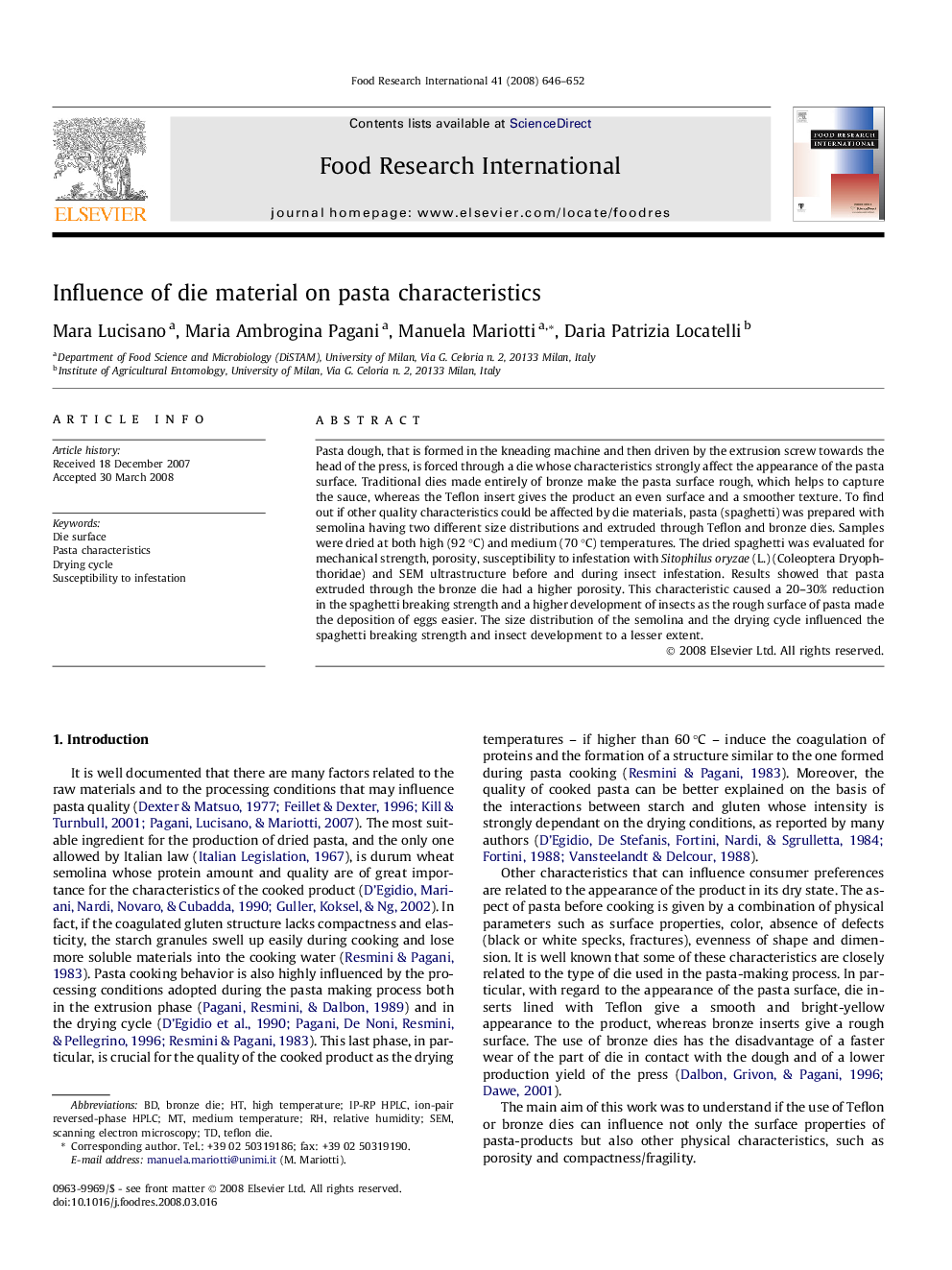| Article ID | Journal | Published Year | Pages | File Type |
|---|---|---|---|---|
| 4562649 | Food Research International | 2008 | 7 Pages |
Pasta dough, that is formed in the kneading machine and then driven by the extrusion screw towards the head of the press, is forced through a die whose characteristics strongly affect the appearance of the pasta surface. Traditional dies made entirely of bronze make the pasta surface rough, which helps to capture the sauce, whereas the Teflon insert gives the product an even surface and a smoother texture. To find out if other quality characteristics could be affected by die materials, pasta (spaghetti) was prepared with semolina having two different size distributions and extruded through Teflon and bronze dies. Samples were dried at both high (92 °C) and medium (70 °C) temperatures. The dried spaghetti was evaluated for mechanical strength, porosity, susceptibility to infestation with Sitophilus oryzae (L.) (Coleoptera Dryophthoridae) and SEM ultrastructure before and during insect infestation. Results showed that pasta extruded through the bronze die had a higher porosity. This characteristic caused a 20–30% reduction in the spaghetti breaking strength and a higher development of insects as the rough surface of pasta made the deposition of eggs easier. The size distribution of the semolina and the drying cycle influenced the spaghetti breaking strength and insect development to a lesser extent.
